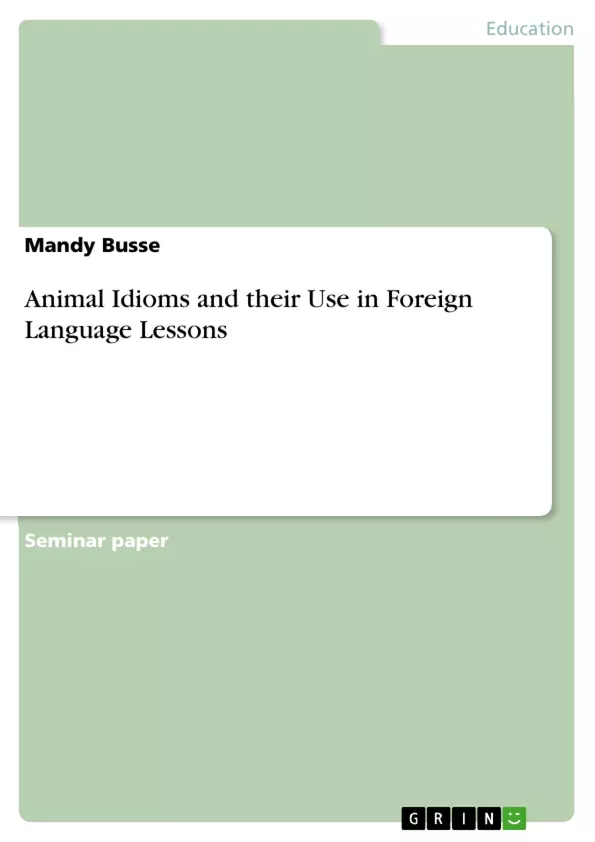Idioms are quite pleasant and fascinating linguistic phenomena to me. I connect idioms to a creative and competent use of language. Therefore, I can still remember the first idiom I learnt at school: It’s raining cats and dogs. At that time, it was just a funny gimmick during the English lesson. Today the study of English opens new vistas to this. Why isn’t it raining fish? Or one could as: Why isn’t it raining cats and dogs in Germany, but “Bindfäden” (twines)?
In this presentation I want to engage in the field of idiomatic expressions containing animal names. As this group is unmanageably wide, I will concentrate on phraseological units that are connected to cats and dogs. After having given a short general linguistic overview of the field concerning idioms, I will concentrate on the possibilities of using idioms in primary class. I will not only give arguments for it but also present material one could use in class.
Table of Contents
- Introduction
- Linguistic focus
- What idioms are
- Animals as source domain
- A comparison between English and German
- Animal idioms in foreign language lessons
- Reasons for teaching animal idioms in (primary) class
- How to teach animal idioms in class
- Material for young learners
- My own ideas
- The Idiom of the Week
- Animal Idiom Puzzle
- My own ideas
- Conclusion
Objectives and Key Themes
This presentation explores the use of animal idioms in English language lessons, focusing on idioms related to cats and dogs. The primary objective is to analyze the linguistic characteristics of idioms, examine the cultural significance of animal imagery, and demonstrate practical applications of teaching idioms in a primary classroom setting.- Linguistic characteristics of idioms
- Cultural significance of animal imagery in idioms
- Teaching animal idioms in the primary classroom
- Comparison of English and German animal idioms
- Development of teaching materials for young learners
Chapter Summaries
The introduction highlights the author's personal interest in idioms and introduces the focus on animal idioms, particularly those related to cats and dogs. The chapter emphasizes the importance of understanding the linguistic features of idioms, even for young learners.
The linguistic focus section delves into the definition and characteristics of idioms, including their idiomaticity, polylexemic structure, lexicalization, and connotative use. It further explores the significance of animals as a source domain for idioms and highlights the frequency of cat and dog imagery in English idioms.
The section comparing English and German animal idioms examines similarities and differences in the usage of these idioms in both languages. It highlights the cultural influence on idiom development and provides examples of equivalent expressions in both languages.
Keywords
The keywords for this presentation are: animal idioms, English language teaching, primary education, cultural significance, linguistic characteristics, phraseology, cat and dog idioms, teaching materials, cross-cultural comparison, Germany.- Arbeit zitieren
- Mandy Busse (Autor:in), 2008, Animal Idioms and their Use in Foreign Language Lessons , München, GRIN Verlag, https://www.grin.com/document/129980



